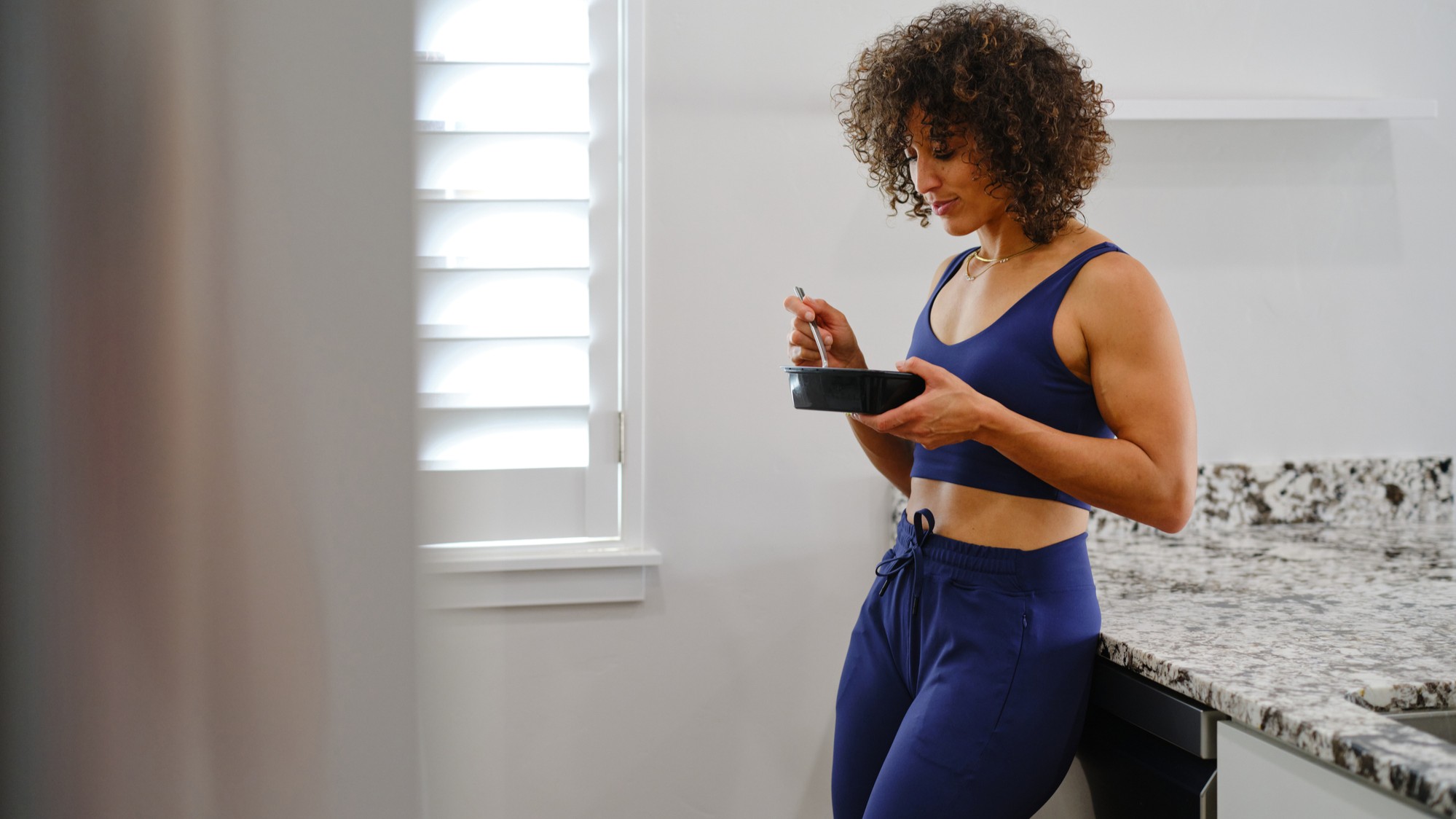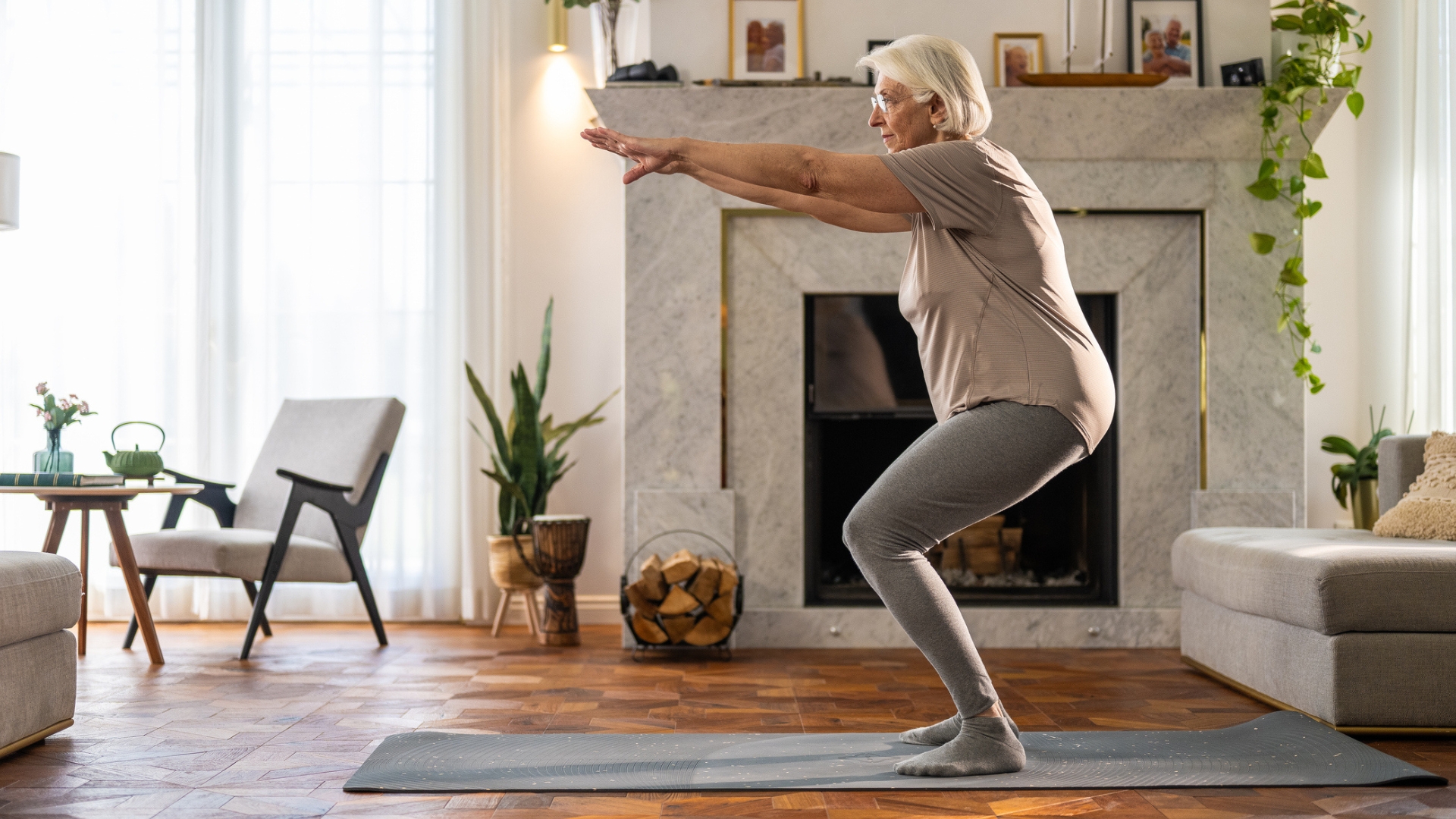Just four minutes of vigorous everyday activity can have serious health benefits, according to this expert
Carrying shopping or brief bursts of power walking can cut the risk of heart attack by 50% a new study finds—here's how to make VILPA one of your healthy habits for 2025

Regular exercise makes us fitter and stronger, boosts energy and mood, and can help us to live longer. But not everyone can, or wants to, take part in structured exercise.
New research, however, suggests that engaging in tiny bouts of vigorous physical activity—something few people would even classify as exercise, like carrying shopping or climbing the stairs—can significantly improve cardiovascular health and drastically reduce the risk of major cardiovascular events like heart attacks.
The research from the University of Sydney published in the British Journal of Sports Medicine found that just 1.5 minutes to an average of four minutes of "daily vigorous physical activity" was enough to halve cardiovascular risk in middle-aged women.
Longer sessions of vigorous intermittent lifestyle physical activity, or VILPA for short, the study's authors noted, are linked to significantly lower cardiovascular disease risk, adding that "given fewer than 20% of middle-aged or older adults engage in regular structured exercise, engaging in VILPA could be a good alternative".
"Making short bursts of vigorous physical activity a lifestyle habit could be a promising option for women who are not keen on structured exercise or are unable to do it for any reason," said lead author Professor Emmanuel Stamatakis, director of the Mackenzie Wearable Hub at the Charles Perkins Centre and the Faculty of Medicine and Health.
How to do it
To start with, Stamatakis suggests people could simply incorporate "a few minutes of activities like stair climbing, carrying shopping, playing tag with a child or pet, or either uphill or power walking" into their day.
A middle-aged person who does a short bout of vigorous activity will get out of breath within 15-20 seconds or so, he added, followed by "a felt increase in heart rate shortly after." These are "good signs" that the bout of activity was vigorous enough to elicit the heart-protecting benefits of VILPA.
Get the Fit&Well Newsletter
Start your week with achievable workout ideas, health tips and wellbeing advice in your inbox.
But, as with exercise generally, consistency is key. "The beneficial associations we observed were in women who committed to short bursts of VILPA almost daily, up to 10 brief bouts on average," says Stamatakis. "Turning such behavior into habit would not necessarily be easy."
For those who are already moderately active, incorporating "a daily set of 10-15 VILPA bouts will likely lead to improvements in aerobic fitness, which may also be translated to long-term health outcomes," says Stamatakis.
The limits of VILPA
VILPA should not be seen as a "quick fix", Stamatakis stressed. "There are no magic bullets for health. But our results show that even a little bit higher intensity activity can help and might be just the thing to help some people develop a regular physical activity or structured exercise habit in the long term."
The data also suggested that men don't enjoy quite the same dramatic benefits from short bursts of VILPA. Men who averaged 5.6 minutes per day were only 16% less likely to experience a major cardiovascular event compared with men who did none. A minimum of 2.3 minutes a day was associated with only an 11% risk reduction.
"In men we could see that the beneficial associations were much subtler than in women," says Stamatakis. "In addition to regular VILPA, men may benefit from engaging in some structured exercise, particularly of the type that involves vigorous intensity."
More about the study
The study focused on the impact of short bursts of high-intensity physical activity that form part of a daily routine.
Longer sessions of VILPA are known to be linked to significantly lower cardiovascular disease risk, but in this study the focus was on physical activity that is purely incidental, such as carrying heavy bags of shopping or briefly power walking to make an appointment, rather than structured exercise like going to the gym or playing sport.
Data was collected from over 22,000 participants aged between 40-79 who reported that they did not engage in regular structured exercise. Cardiovascular health was monitored through hospital and mortality records, tracking major adverse cardiovascular events, such as heart attack, stroke and heart failure.
The results were stark. After adjusting for lifestyle factors, ethnicity and co-existing conditions, researchers found that the more VILPA women did, the lower their risk of a major cardiovascular event. Compared with participants who engaged in no VILPA, women who averaged 3.4 minutes of VILPA daily were:
- 45% less likely to experience a major cardiovascular event
- 51% less likely to have a heart attack
- 67% less likely to develop heart failure
Shorter bursts of daily VILPA still showed positive results. A minimum of 1.2 to 1.6 minutes of VILPA per day was associated with a 30% lower risk of total major cardiovascular events, a 33% lower risk of heart attack, and a 40% lower risk of heart failure.

Sam Rider is an experienced freelance journalist, specialising in health, fitness and wellness. He is also a REPS level 3 qualified personal trainer.
-
 Put down the protein shake—this high-protein chicken and rice recipe is a better way to refuel after a workout
Put down the protein shake—this high-protein chicken and rice recipe is a better way to refuel after a workoutAnd it only takes 10 minutes to make
By Lou Mudge
-
 The three Pilates exercises every beginner should start with, according to an expert instructor
The three Pilates exercises every beginner should start with, according to an expert instructorA sequence that will take you no more than 10 minutes
By Alice Porter